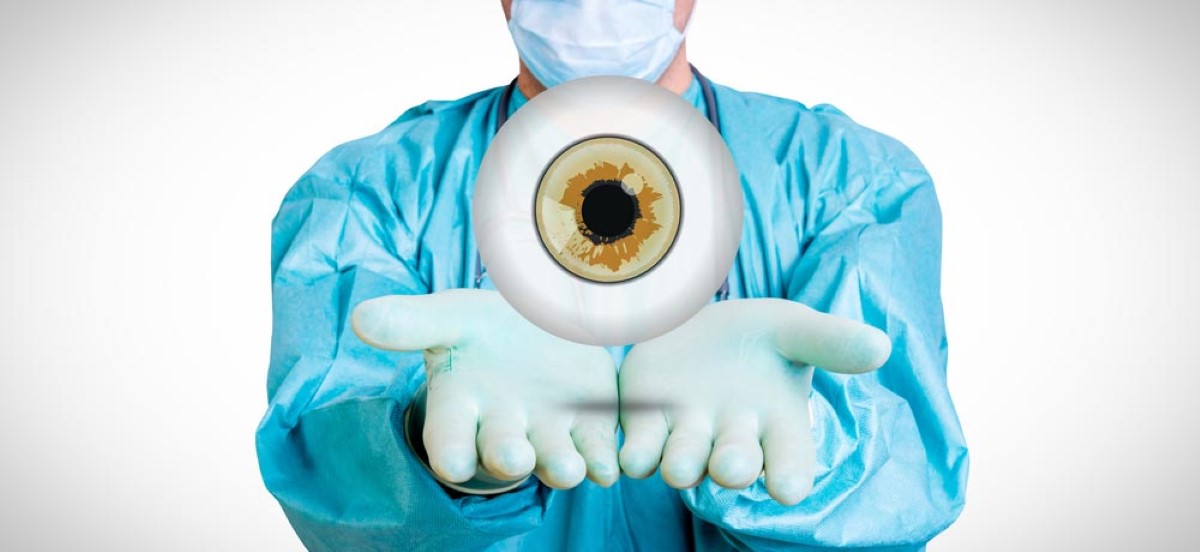Do Our Eyes Keep Growing as We Age?
One of the most popular myths about eyes is that they are the only organ that doesn’t grow. However, this couldn’t be farther from the truth.
Aside from changes in our vision, our eyeballs also experience physical changes — and that includes growth. Here are all the ways your eyes can develop as you age.
Do eyeballs grow as we age?
Babies tend to have big cute eyes, which look even bigger in relation to their tiny bodies. At that age, our eyes are roughly two-thirds smaller than what they’ll be when we reach adulthood. In fact, babies are born with eyes that are only about 16.5 millimeters in length.
That’s just a little smaller than a dime!
However, our eyes don’t stay that way forever. They actually grow a lot, especially in the first two years of our life and during puberty.
When do our eyes stop growing?
Our eyes stop growing in length by the time we reach the age of 20 or 21, or when they reach about 24 millimeters.
However, the weight of our eyes’ lenses continues to grow over time. As soon as we’re born, they continue to grow rapidly. Then, the growth becomes linear within a few months and our lenses get heavier by 1.38 milligrams per year for the rest of our lives.
Changes in our eyeballs over the years
Size aside, our eyeballs experience all kinds of other changes over time, including visual, medical, and physical ones.
Changes in vision
- MyopiaAlso known as nearsightedness, myopia is a common vision problem where one cannot clearly see things from afar. It occurs when the image of a distant object is not focused directly on your retina but in front of it, causing it to look blurry.
- HyperopiaMore commonly known as farsightedness, hyperopia is another common refractive error in which things that are nearby appear blurry instead. As opposed to myopia, hyperopia occurs when the image of a distant object is focused on the back of one’s retina instead of on it.
- AstigmatismIf you often see two moons (or more) at night, or see rings/halos around lights, chances are you have astigmatism. It’s caused by lenses that are irregularly shaped or defective, and makes it difficult to focus on both near and far objects.
- Color blindnessThis vision issue means you perceive colors differently from most people. For example, when others see red, you might see orange instead. Color blindness is divided into many more types, which you can read about here.
Age-related changes
- PresbyopiaAlso known as age-related farsightedness, presbyopia is something that progresses over time and becomes noticeable after one reaches their mid-40s. It can continue to deteriorate up until the age of 65.
- Age-related macular degenerationKnown as AMD for short, this is an eye disease that blurs your central vision and is most common for those aged 60 and above. It impairs your central vision by damaging the blood vessels that supply the macula, which is the part of your retina that gives you sharper vision.
- CataractsA cataract is a cloudy area that forms in the lens of your eye. It’s very common as you get older and more than half of all Americans around the age of 80 and older have this issue or have undergone surgery to get rid of it.
- GlaucomaGlaucoma is a disease that damages your eye’s optic nerve, leading to gradual loss of peripheral vision. Those with diabetes are at a higher risk of getting it.
- Dry eyesAnother age-related condition, this is an ailment that gets increasingly common as you age up. Your eyes will gradually produce fewer and fewer tears, which are responsible for keeping your eyes moist and comfortable.
- FloatersThese refer to spots in your vision that usually look like gray or black strings, specks, or cobwebs. They are caused by the liquifying and contracting of the jelly-like substance inside your eyes. That said, floaters are usually nothing to worry about if there are only a few, as you can move your eyes to shift the substance around.
Physical changes in the eye area
- Drooping of eyelidsAs we get older, the nerve that controls the muscle of our eyelid weakens.
- Yellowing or browning of eyeballsYour eyes turn yellow or brown when there is a buildup of bilirubin, which is a yellowish pigment made during the breakdown of red blood cells. This happens when eyes are exposed to UV rays, wind, and dust for a prolonged period.
- Eyes becoming puffierAs you get older, the tissues around your eyes will also weaken, leading to a puffier appearance overall.
- Wrinkles and crow’s feetOur skin loses its elasticity with age and constant muscle use, resulting in wrinkles and crow’s feet, a.k.a. little lines that form near the corners of our eyes.
- Dark eye circles and under-eye bagsThe skin below your eyes gets thinner and looser over time. As a result, the blood vessels under your skin will become more visible and darken your under eye area.
Ways to take care of our eyes
There are countless magazine articles telling us how to take care of our health, our skin, our hair, and even our feet, but our eyes receive very little attention by comparison.
Whether you’re currently living with a vision issue or not, you can easily maintain or improve your eyes’ health with a few tweaks to your lifestyle. Doing so also builds a solid foundation that will lead to fewer problems down the line.
Here are some healthy habits to promote eye health:
- Consume more food and drinks that are rich in eye-loving vitamins, such as vitamin A or B.
- Wear protective eyewear such as safety goggles and sunglasses to prevent or minimize damage from UV rays.
- Get regular eye exams to detect any vision problems as early as possible.
- Take regular breaks from blue light-emitting screens like the ones on your smartphone and computer to reduce eyestrain.
There are many other ways to keep your eyes healthy inside out, which you can read more about here.
Get the ball rolling on eye health
Learning how our eyes work and fostering habits to keep them healthy are key to ensuring you can see with utmost clarity for as long as possible.
Whenever you sense any abnormal changes to your eyeballs or eye area, don’t hesitate to consult an eye care expert immediately. It could be the very thing that makes a difference between a temporary discomfort and a long-term disability.
Check back Mouqy regularly for more eyecare and eyewear content!

Written by:
Shu Kie












